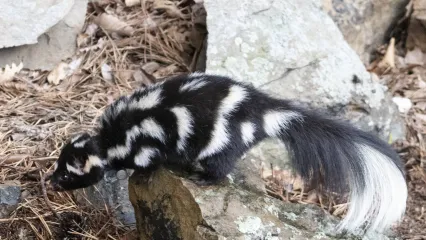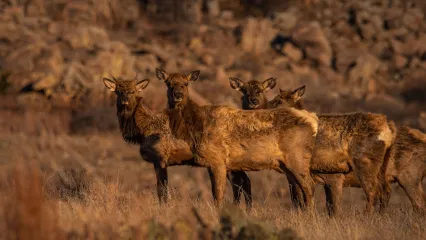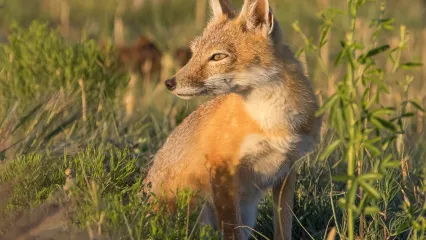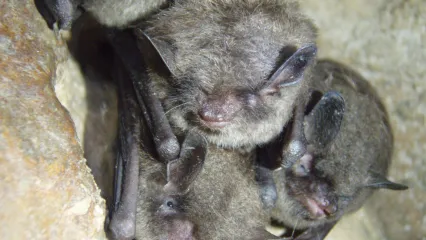
Description
The body pattern of the plains spotted skunk consists of numerous broken and smaller white stripes on the sides and back. Spotted skunks use foot stomping and “handstands” to warn and ward off potential threats before resorting to using their spray.
Size
The plains spotted skunk is considerably smaller than the more widespread and abundant striped skunk, averaging only 1 – 1.5 lbs. and 20 inches long.
Habitat
Historical accounts note that plains spotted skunks use a variety of habitat types, but they seem to prefer areas dominated by mixed hardwood-pine forest with rocky outcrops. Spotted skunks have also retained a semi-arboreal foot morphology that allows them to use vertical structures in addition to burrows. Plains spotted skunks have been known to exploit burrows made by other animals such as ground squirrels or use tree cavities for resting spots.
Plains spotted skunks have been documented in at least 30 Oklahoma counties. However, the species experienced population declines throughout the mid-1900s. While the exact reasons for the decline are unknown, biologists speculate that a combination of land use and land cover changes reduced habitat quality and limited prey resources. Both the plains and western spotted skunk (S. gracilis) have a year-round closed season in Oklahoma and cannot be hunted or trapped.
Life Cycle
Few studies have been conducted into dietary habits of plains spotted skunks, but they tend to be more carnivorous than other skunks.
Plains spotted skunks are most active and most observed during their breeding season, generally from January through May, when males make longer distance movements in search of females. Gestation period is 55-65 days and females give birth to 3-7 young in an established den.
How To Observe
Plains spotted skunks are considered cryptic because of their nocturnal and behavioral tendencies that make them hard to find, and they are considered rare because they occur in low densities. The most robust populations of spotted skunks in Oklahoma likely occur in the southeastern portion of the state. The Wildlife Department is interested in gathering sightings from the public. If you see a spotted skunk, please report details of the observation (location, habitat description, and a photo if available) to Jerrod Davis, Furbearer Biologist, at jerrod.davis@odwc.ok.gov.


